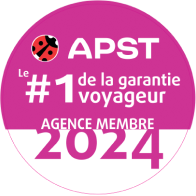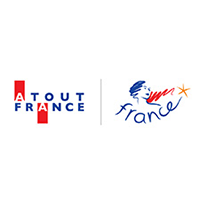Cambodia
Covering 18 hectares along Sothearos Boulevard, between Streets 184 and 240, the Royal Palace has been the residence of the Cambodian sovereigns since its construction. It is also one of Phnom Penh’s major tourist attractions. In a calm and serene atmosphere, visitors can stroll through the central complex and admire the beauty of Khmer architecture while visiting emblematic structures such as the Throne Hall and the Silver Pagoda. The private residential area of the Palace, known as the "King's Living Quarters," occupies half of the estate and remains closed to the public.
History
Built in stages over several decades, the Royal Palace was initially designed by a Khmer architect and constructed with the support of the French protectorate in 1866. It was erected on the ruins of a citadel built by King Ang Chan II in 1813, opposite Chaktomouk, the strategic confluence where the Mekong River splits into four branches, forming the Tonlé Sap and Tonlé Bassac rivers. This site was specifically chosen by a commission of astrologers and royal ministers for its geographical significance and its potential to bestow strength and power upon the monarch, with water being an essential element. The Palace was officially inaugurated on February 14, 1870, and the royal court took up permanent residence in 1871.
Since its inception, the Palace has undergone numerous transformations. Buildings have been added, modified, or demolished and rebuilt, most in traditional Khmer style. All structures are oriented to the east, in accordance with sacred Buddhist construction rules. The surrounding walls were erected in 1873 and later painted in royal yellow.
The Visit
In the areas open to the public, manicured lawns, French-style trimmed groves, and tropical vegetation enliven the well-maintained gardens separating the different buildings. Among the few surviving structures from King Norodom I's reign, the Emerald Buddha Pagoda—Vat Preah Keo, more commonly known as the Silver Pagoda—was built between 1892 and 1902. It houses many remarkable national treasures, including the famous small Emerald Buddha, which is in fact made of crystal. It faces the Maitreya Buddha, a 90-kilogram gold statue said to have been modeled after King Norodom I’s exact measurements. Under King Sihanouk’s reign, the Vat Preah Keo was paved with more than 5,000 silver tiles (hence its nickname, the Silver Pagoda), while part of its exterior façade was renovated with Italian marble. The precious flooring is still visible, although largely covered by carpets.
The outer cloister walls are adorned with murals painted between 1903 and 1904, depicting scenes from the Reamker, the Khmer version of the Ramayana, one of Hinduism’s founding epic tales.
Other more unusual legacies can be discovered in the courtyard, such as the cast-iron Napoleon III Pavilion, characteristic of the "Eiffel years" (currently undergoing restoration). Originally built in Ismailia, northeast Egypt, to accommodate Empress Eugénie during the inauguration of the Suez Canal, it was gifted by France to Cambodia in 1876. Another curious sight is the equestrian statue of King Norodom I dressed as a French general. It is said to have originally been a statue of Napoleon III, with the head replaced by that of the Cambodian monarch.
The current Chanchhaya Pavilion and Throne Hall were erected between 1913 and 1919 at the request of King Sisowath to replace the original wooden structures.
Visible from outside the Palace grounds, the splendid Chanchhaya Pavilion, also known as the Moonlight Pavilion, hosted royal dance performances and receptions. It also served as a platform from which the king addressed the public. Today, it continues to fulfill this ceremonial role and was notably used during the 2004 coronation of His Majesty King Norodom Sihamoni, the current King of Cambodia.
The Throne Hall still hosts religious and royal ceremonies, such as coronations, weddings, and official meetings. The cruciform building is crowned with three spires, or prasat. The central spire, standing 59 meters tall, is topped with a four-faced head of Brahma.
How to get there
Located in the heart of Phnom Penh along Sothearos Boulevard, facing the river, the Royal Palace is easily accessible on foot, by tuk-tuk, or by taxi, depending on your starting point. The visitor entrance is near Street 240.
Opening Hours
The Palace is open to the public from 7:30 AM to 11:00 AM and from 2:30 PM to 5:00 PM.
The Throne Hall is closed to visitors during official ceremonies. Visitors are required to dress appropriately (no shorts, short skirts, or bare shoulders). Photography inside the buildings is not permitted.

